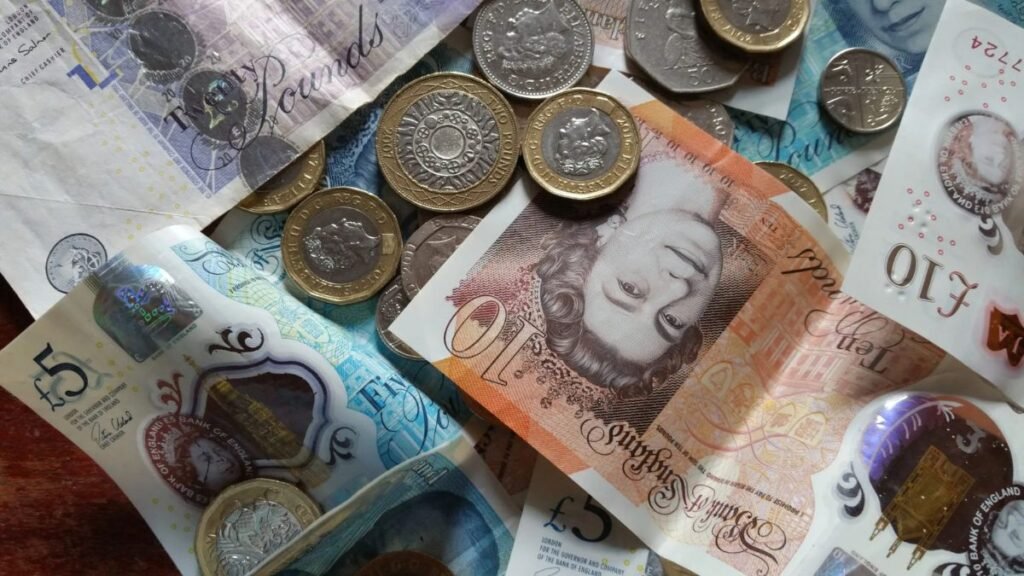With everyday expenses continuing to climb in 2025—including groceries, energy, rent, and household essentials—the UK government has introduced a much‑needed lifeline. This year, eligible low‑income households receiving means‑tested benefits will receive up to £800 in support, disbursed in three instalments. Managed jointly by the Department for Work and Pensions (DWP) and HM Revenue & Customs (HMRC), this automatic direct‑to‑bank payment is specifically designed to ease the financial burden during the toughest parts of the year.
What Is the £800 Cost‑of‑Living Support?
This isn’t a one‑off windfall, but a planned, non‑taxable support measure spread across three strategic payments. It is not a permanent benefit increase, but rather a targeted response to help families struggling with rising costs.
Payment calendar:
- First instalment – £300 — expected between May and June 2025
- Second instalment – £300 — expected between June and July 2025
- Third instalment – £200 — expected around October 2025
Because the funds will arrive automatically, look for entries labeled “DWP COL” or “HMRC COLS” on your bank statement. The payment is based on your status at the time each instalment was calculated, known as the eligibility snapshot, meaning you must be receiving the qualifying benefit at that time.
Who Qualifies?

To be eligible, you must be receiving one of the following means‑tested benefits during the snapshot period:
- Universal Credit
- Income‑based Jobseeker’s Allowance (JSA)
- Income‑related Employment and Support Allowance (ESA)
- Income Support
- Pension Credit
- Working Tax Credit
- Child Tax Credit
There’s good news for those with additional challenges: disability‑linked benefits such as Personal Independence Payment (PIP), Disability Living Allowance (DLA), Attendance Allowance, the Armed Forces Independence Payment, or War Pension Mobility Supplement may entitle you to a future top‑up. Keep an eye on government communications for updates on that extra support.
Note: Contribution‑based ESA or Carer’s Allowance alone do not qualify unless combined with another listed benefit.
Key Snapshot and Payment Windows
Payment eligibility depends on receiving the qualifying benefit during a specific two‑month period before each instalment. In 2025, this was generally between mid‑January and late February for the spring payments.
Because of the administrative timing:
- May–June payments rely on your status in that earlier window.
- October payments follow a later snapshot.
- Discrepancies may lead to missing an instalment—but they’re often fixable by updating details quickly.
Getting Paid
The support will land through the same channel as your regular benefits:
- DWP Payments: between late May and late June
- HMRC Payments: completed by the end of June
Watch your bank statements carefully. If you don’t see the payment soon after those windows, use the “Report a Missing Payment” tool on GOV.UK. Common issues include outdated bank account info or paused benefits, which can be resolved by contacting DWP or HMRC or making corrections online.
Why £800 Matters
While £800 is not a long‑term fix, it offers meaningful relief spread out over the year. Here’s why it matters:
- Buffers against inflation: Helps budget for groceries, energy bills, and transport amid rising costs.
- Smart timing: Spacing £300, £300, and £200 across the year helps during peak cost periods, such as winter heating bills.
- Supports families and individuals: Tailored to those on low incomes and additional disability support.
Real‑Life Scenario

1. The Universal Credit Household
Take Ravi and Aisha—married couple, both on Universal Credit since December 2024. They’ll receive £300 in May/June, another £300 in June/July, and £200 in October—a total of £800 spread throughout 2025.
2. Disability Benefit Holder
Maya receives PIP and qualifies for the standard instalment. She may also receive a top‑up later in 2025 (pending government rollout), giving her even more support.
3. Single Carer on ESA (not means‑tested)
Jason receives only contribution‑based ESA and is therefore not eligible for this specific payment—unless he also receives a means‑tested benefit during the snapshot.
Pro Tips for Getting and Using the Mone
- Update your details
- Log in to your DWP or HMRC account and verify your bank and address information early.
- Check statement dates
- The messages “DWP COL” or “HMRC COLS” mark the arrival of support funds.
- If payments are missing
- Visit GOV.UK to report; fix account or benefit issues promptly.
- Budget it wisely
- Use early payments for essentials like food and energy.
- Save part of the October instalment for winter bills.
- If you’re managing debt, seek advice through Citizens Advice or StepChange.
- Stay alert for extra payments
- Disability benefit recipients, especially those on PIP, may be eligible for additional support later in the year.
What This Means for Households
In a year marked by continued financial pressure, the government is choosing a predictable, staged support model over one-off lump sums. This approach:
- Provides relief spread throughout the year.
- Helps households adapt to rising bills across seasons.
- Acknowledges that inflation isn’t uniform—it hits different sectors at different times.
Quick Recap
| Question | Answer |
|---|---|
| Does anyone need to apply? | No—payments are automatic if eligible. |
| Is the £800 taxable? | No—these payments are non‑taxable. |
| Are payments monthly or one lump sum? | They’re in three instalments: £300, £300, £200 |
| Who qualifies? | Anyone on means‑tested benefits or certain disability payments. |
| What if something’s missing? | Check your statements, report missing payments, update your info. |
Final Thought
This Cost‑of‑Living support is more than just a temporary patch—it’s an acknowledgment of real‑world struggles. Whether you’re managing a household, living on a pension, or navigating life with a disability, this £800—spread thoughtfully across 2025—aims to give you a little breathing space.
To make the most of it:
- Confirm your benefits and bank info are up-to-date.
- Track payments from May through October.
- Use the money strategically to cover peaks in your annual budget.
And if you need help managing changes or optimizing your finances, I’m here to guide you step by step.
FAQs
1. What is the £800 UK Cost of Living Payment in 2025?
The £800 payment is a government support measure aimed at helping low-income households in the UK cope with rising living costs in 2025.
2. Who is eligible for the £800 cost of living payment?
Eligibility generally includes people receiving qualifying benefits such as Universal Credit, Pension Credit, Income Support, ESA, JSA, or Tax Credits. Check official DWP/HMRC criteria to confirm.
3. When will the £800 payment be made?
Payment dates will be confirmed by the Department for Work and Pensions (DWP), but they are expected to roll out in mid to late 2025 in multiple instalments.
4. Will the payment be automatic or do I need to apply?
Most eligible individuals will receive the payment automatically in the same account where their benefits are deposited—no separate application is needed.
5. How will I know if I’m getting the £800 payment?
You will receive a notification from DWP or HMRC, and it may appear in your bank statement with a reference like “DWP COL” (Cost of Living).

